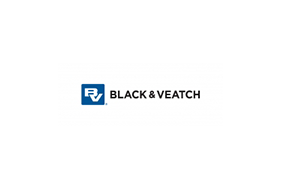Required Water System Update: Resilience Assessments and Plans
It’s 2024. Do You Know Where Your Risks Are (and What to Do about Them)?
Published 04-10-24
Submitted by Black & Veatch

By The Black & Veatch Insights Group
A record 28 “billion-dollar” weather and climate disasters struck the United States in 2023, according to the National Oceanic and Atmospheric Administration (NOAA), causing an estimated $92.9 billion in damages. The year was not an outlier but part of a rising trend in disruptive natural disasters increasing in intensity, frequency and resulting cost. Such extreme events – compounded by aging infrastructure, changing demand patterns, supply chain issues and workforce changes – can be expected to continue, endangering the critical energy, water and communications infrastructure that drives business and underpins our quality of life. It’s putting utilities under increasing pressure to actively manage their risks and increase their resilience.
Water Sector: Time to Prep for Required Updates
Water utilities have a mechanism to address the pressure. The America's Water Infrastructure Act of 2018 (AWIA) was passed into law in October 2018 and, through amendments to the Safe Drinking Water Act, introduced a new requirement for water systems serving more than 3,300 people to conduct a risk and resilience assessment (RRA) and prepare an emergency response plan (ERP) that incorporates the findings of the RRA. Both elements need to be reviewed and updated every five years and certified by the utilities to the U.S. Environmental Protection Agency (EPA).
With the first round of certifications completed during the 2020-2021 timeframe, water utilities are coming up on the next round. They must re-certify to USEPA that they have conducted, reviewed, or updated their RRAs and ERPs by the following dates.
Served Population1
More than 100,000
- RRA due by
March 31, 2025 - ERP due by
September 30, 2025
Served Population1
50,000 to 99,999
- RRA due by
December 31, 2025 - ERP due by
June 30, 2026
Served Population1
3,301 to 49,999
- RRA due by
June 30, 2026 - ERP due by
December 31, 2026
1The total served population must include consecutive systems served by the utility, if any.
Taking a Consistent Approach to Risk and Resilience Assessments
Although the EPA does not require the use of specific standards, methods or tools for completing RRAs, it has recommended the use of available standards and tools from the Agency and the American Water Works Association (AWWA). These standards and tools include the AWWA J100-21 Standard for Risk and Resilience Management of Water and Wastewater Systems, and the EPA’s Vulnerability Self-Assessment Tool (VSAT). The J100 methodology is based on a seven-step process to assess risk and resilience and develop options for long-term resilience management.
7-Step Risk, Resilience Management Process
- ASSET CHARACTERIZATION
What assets do I have? Which are critical? - THREAT CHARACTERIZATION
What threats and hazards should I consider? - CONSEQUENCE ANALYSIS
What happens to my assets if a threat or hazard happens? - THREAT ANALYSIS
What is the likelihood that a hazard will strike my facility? - VULNERABILITY ANALYSIS
What are my vulnerabilities that would allow a threat or hazard to cause these consequences? - RISK AND RESILIENCE ASSESSMENT
What is my current level of risk and resilience? - RISK AND RESILIENCE MANAGEMENT
What options do I have to reduce risks and increase resilience? What are the benefits and costs?
Black & Veatch has synthesized the spectrum of available tools and processes and developed a practical, spreadsheet-based tool to assist in the completion of an RRA. Our in-house team of experts has assisted water utilities of all sizes across the U.S. in their initial certifications, providing them with a repeatable and structured process based on the AWWA J100 standard for completing their RRA and ERP development and updates. AWIA tools developed by Black & Veatch use the J100 methodology as a general framework and are further strengthened by VSAT tool features, a suite of cybersecurity assessment tools, lessons learned from numerous AWIA assessments, and the multitude of AWIA guidance documents provided by the USEPA over the initial AWIA certification period.
Implementing a Successful Resilience Program
In the annual surveys that inform Black Veatch’s Strategic Directions Reports for the water sector, resilience has been consistently ranked within the top three challenges utilities are facing. The good news: studies show every $1 spent on risk mitigation reduces future disaster costs by $4 to $6. A range of solutions are available through Black & Veatch for different scales, complexities and maturities of organizations to help utilities define their resilience “stance,” assess their current maturity and invest in practical, actionable improvement plans to meet their resilience goals cost-effectively.

Black & Veatch
Black & Veatch
Black & Veatch is an employee-owned engineering, procurement, consulting and construction company with a more than 100-year track record of innovation in sustainable infrastructure. Since 1915, we have helped our clients improve the lives of people in over 100 countries through consulting, engineering, construction, operations and program management. Our revenues in 2018 were US$3.5 billion. Follow us on www.bv.com and in social media.
More from Black & Veatch

